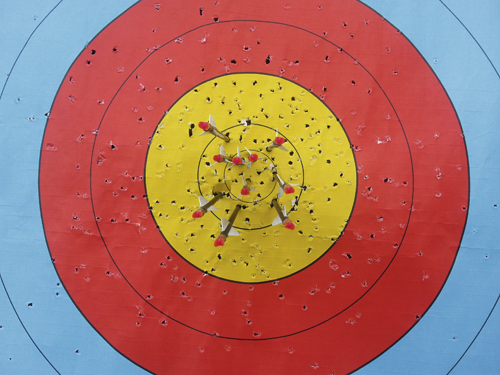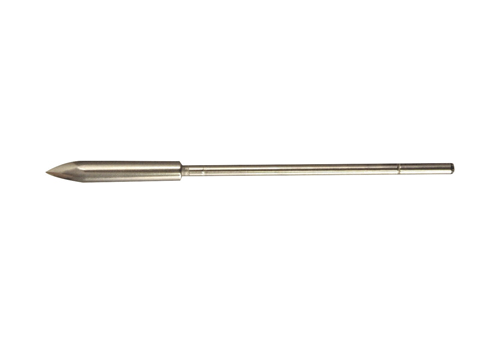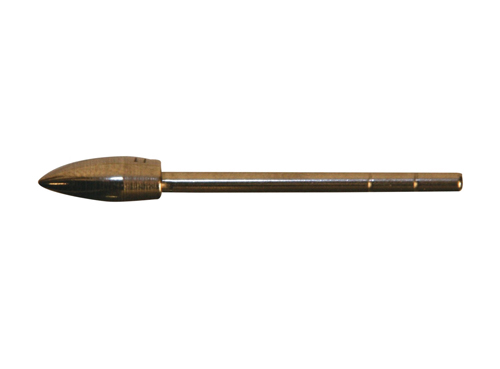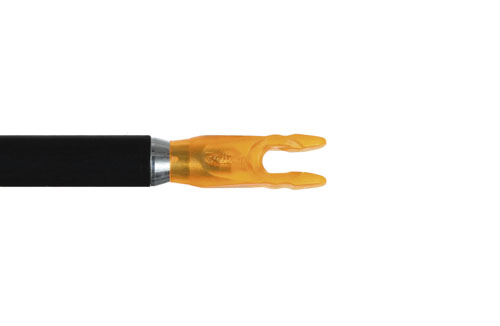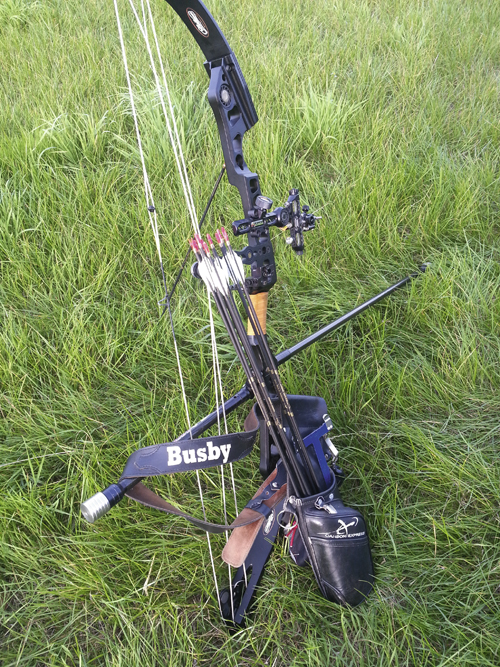You selected the perfect shaft, but what’s next? Duncan Busby explains how to plan and build your arrows
Selecting the right components for your arrows can be a daunting decision. With so many options available, how do you know which accessories will give you the best results? If you have taken the time and expense to carefully choose the correct arrow model, spine and length, it’s important that you get the most out of your investment by using the most suitable components. This is the first of my two-part my guide to choosing your points, pins, nocks and vanes. I’ll be looking into the specific uses for each design and I’ll advise you on how to best fit each one to your arrows.
Points
The parabolic point is the most commonly used tip among outdoor archers, and its bullet shape makes pulling the arrow from the target much easier. It’s the only point available for narrow shaft arrows, though indoor shooters or those using wider shafts have a further option to use pin points; these are cone-shaped in design and have a sharp tip that can cut through the target much more effectively. Some archers claim these make their arrows more accurate.
Your choice of material will depend upon how much you’re willing to pay for a set of points, and prices will vary dramatically from around £10 to as much £240 per dozen. A composite point made of steel and alloy is the cheapest way to kit your arrows out. These points are tough enough to withstand most targets and are accurately matched, but on the downside, they will not last as long as points that contain tungsten since they are more likely to bend. This can, in some cases, cause the front of the arrow to crack.
Tool steel points, available from Carbon Express, are mid-range in price and are a mixture of tungsten and steel. This makes them extremely tough and hard wearing and better able to resist bends and dings caused by impacts with other arrows. As with all points containing tungsten though, they will sheer off rather than bend when put under undue pressure, although this is very rare. These are my personal choice for points as they give you the best of both worlds without the specific disadvantages that come with using a point made mostly from one material.
Finally, the most expensive points on the market are tungsten points, although technically they are a composite of tungsten and steel because tungsten is too brittle to be used by itself (most manufacturers use between 96-98 per cent). They are considered to be the hardest wearing points available. Most people consider them a worthwhile investment since they should outlast most arrow shafts, although because of the nature of the material tungsten points are more prone to snapping rather than bending.
One thing you may notice is that the higher end points containing tungsten are smaller that their all-steel counterparts. The density of the material allows manufacturers to make these points more compact without affecting the overall weight, and this helps to reduce the impact the shank of the point will have on your arrow spine.
Each manufacturer will offer their own composites so you may not have all these options available to you. I would recommend consulting the product guide and choosing an option based on the amount of money you are willing to invest in your points.
Although many of us will choose to use manufacturer-specific points for ease and for the guarantee that they will fit our arrows, higher prices are encouraging some archers to switch to third party companies. In an ideal world this is not a problem, but there is a chance that the points you choose could fit badly or may not be well matched in weight. I would recommend that every time you buy a set of points you weigh each one on a set of grain scales to make sure they all weigh the same. This is something I do with every set of points I use regardless of where I have got them from. You should also test fit them in your shafts before adding any glue, and they should fit snugly but be easy to remove. If they are too big they could crack the end of the shaft, and if they are too small they could fall out as you use them.
The most effective way to fit points is to use hot melt glue, as this will hold them in firmly but will allow you to remove them when needed. There are many hot melt glues on the market and most will do the job well, but it’s safer to use one that is marketed as archery-specific, as some craft glues may not be strong enough or may require too much heat to remove the point, which will damage your carbon shafts.
Whichever points you choose I would always recommend that you begin by using the heaviest available, this is especially important when your points have a break-off design, since you cannot add weight back on once you’ve broken it off, which can be an expensive mistake to make if you are using tungstens. I have always found that using heavy points outdoors (120 grains) helps to reduce the amount of wind drift I get and improve my long distance groups.
Inserts
Some arrow models also come with the option to fit a threaded insert into the front of the shaft. This useful addition allows you to not only quickly and easily change your point weight – which is a helpful arrow tuning method – but also to change your point design, which allows you to adapt your arrows according to purpose. Although they are not available for every model of arrow, keep a look out for them, especially if you intend to swap your points regularly.
Pins and Bushings
Depending on the nock system you choose you may require pin nock adapters or bushings. These are usually made from aluminium due to its strong, lightweight properties, and come in a range of designs.
As with your points, choosing the ones the manufacturer recommends is usually the safest option. Although it is not impossible to use a different manufacturer’s components, the fit may be compromised, so I would always recommend using pins and bushings designed for your specific arrow model and spine.
It is important that you test fit them in the back of the arrow before fixing them in. Make sure they fit snugly and they are square to the shaft, because even though they are precision made, there can be small discrepancies, and a badly fitting or bent pin can ruin the performance of your arrow. Only once you are happy with the fit should you fix the pin or bushing in place. Be careful to follow the manufacturer’s instructions and use the method they recommend, which can be a simple push fit or it may require glue. Using the wrong method could damage your arrows or cause your components to come loose.
I’ll complete looking at the arrow setup process in another feature; where I will look at how to choose and fit your vanes and nocks. In the meantime, if you want any further information go to www.duncanbusbyarchery.com or email duncanbusbyarchery@gmail.com.


